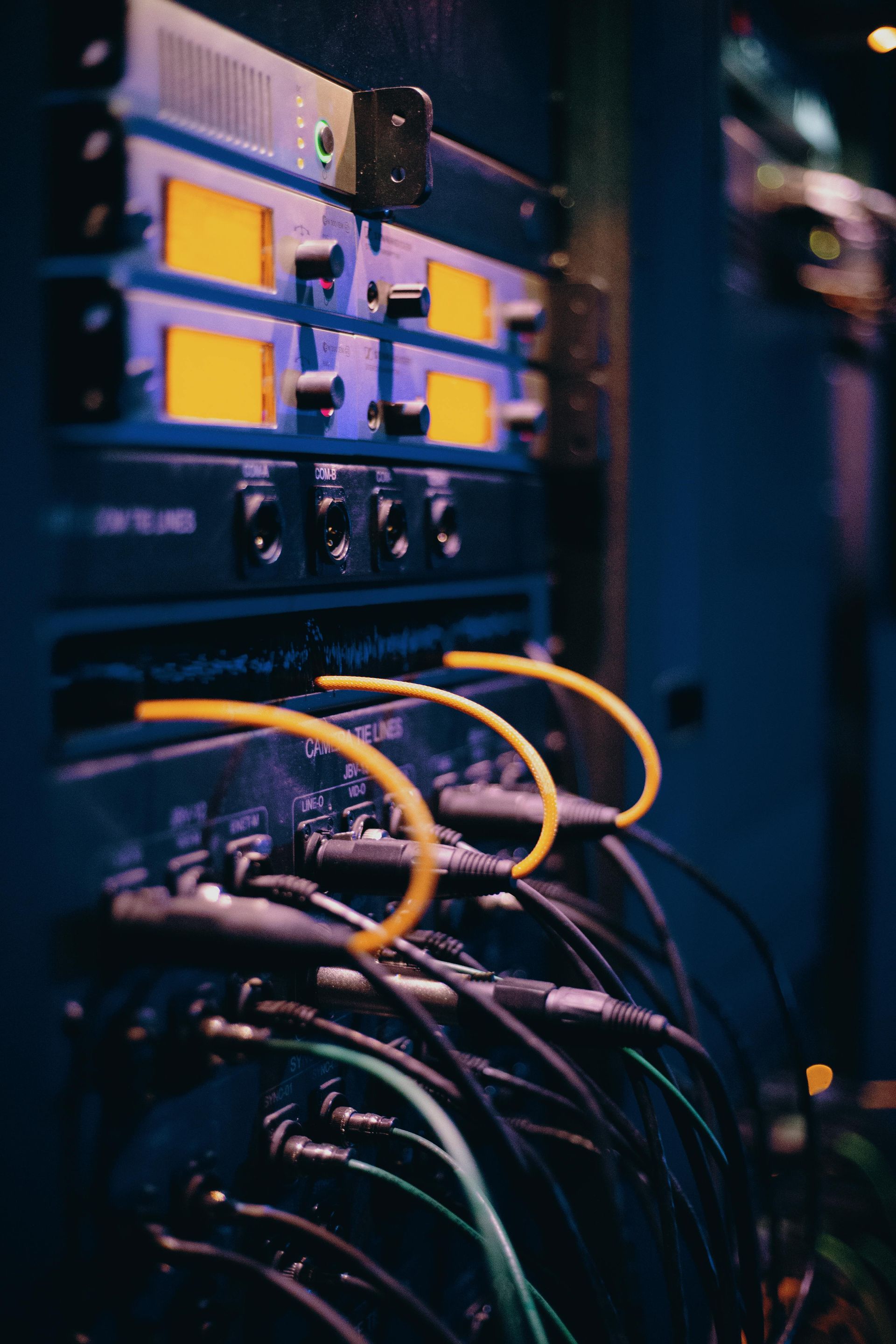Durability and Integration of Emergency Phones in MDUs and Business Environments

In unpredictable environments, a reliable line of communication can save lives, making the durability of emergency phones a critical consideration. Whether located in elevators, poolside areas, or outdoor spaces, these devices are essential for ensuring safety in residential complexes (MDUs) and business environments. But it’s not just about durability; modern emergency phones can seamlessly integrate with security systems, providing a comprehensive safety net that enables a rapid response to incidents. This article delves into the robust design of emergency phones, emphasizing their durability in harsh conditions and their integration with broader security systems, creating safer and more resilient environments.
Importance of Durability in Emergency Phones
Overview of Durability Needs
Emergency phones are often installed in places that face constant exposure to environmental challenges, such as outdoor locations and high-use areas like elevators and parking lots. These locations present unique durability challenges, including exposure to water, extreme temperatures, humidity, and the potential for vandalism. For emergency communication to be reliable, the phones must be built to withstand these conditions. A malfunctioning phone in a critical moment can lead to devastating consequences, making durability a non-negotiable feature.
For property managers, selecting phones designed with high durability ensures that their communication systems will continue to function reliably, regardless of the environment. It also minimizes the costs associated with frequent repairs or replacements.
Material Choices for Enhanced Longevity
The durability of emergency phones starts with their construction. High-quality materials such as stainless steel and weather-resistant plastics are commonly used in the manufacturing of these devices. These materials offer resistance to rust, corrosion, and impact, ensuring that the phones remain operational even after years of exposure to harsh conditions.
Waterproofing is another key factor, especially for phones in outdoor and poolside areas. Waterproof seals and corrosion-resistant finishes help prevent moisture from damaging internal components. This is particularly crucial for outdoor installations that need to maintain functionality during heavy rain or snow. Additionally, vandal-resistant designs—such as reinforced casings and tamper-proof screws—add an extra layer of protection, making these phones suitable for high-traffic or vulnerable areas.
Focus on Poolside Phones: Designed for Water Exposure
Challenges of Poolside Environments
Poolside environments pose specific challenges for emergency phone installations. These areas experience constant water exposure, high humidity levels, and chemical exposure from pool treatments like chlorine. Furthermore, they are typically in direct sunlight, which can cause fading and material degradation over time. Ensuring that emergency phones in these environments remain functional requires specialized design considerations.
To address these challenges, poolside phones must meet high Ingress Protection (IP) ratings, such as IP67 or IP68. These ratings indicate a phone's ability to resist water and dust, ensuring that the phone remains operational even if submerged temporarily. This level of protection is crucial for maintaining communication capabilities in areas where water exposure is inevitable.
Features That Enhance Durability
Emergency phones designed for poolside use come equipped with several features that enhance their longevity. Sealed enclosures are common, preventing water from reaching the electronic components. Many of these phones are also designed with UV-resistant materials, ensuring that the casing does not become brittle or faded due to prolonged exposure to sunlight. This focus on durability ensures that the phones can provide reliable communication, even in the most challenging conditions.
Why Durability Matters for Compliance
In many jurisdictions, having functional emergency communication systems in pool areas is not just a recommendation—it’s a legal requirement. Durable emergency phones help ensure that properties remain compliant with local safety regulations. Regular maintenance and testing are necessary to maintain compliance, but a phone built for durability reduces the frequency of failures and ensures that residents and visitors can rely on it when it counts the most.
Integrating Emergency Phones with Broader Security Systems
Why Integration is Important
While durability ensures that emergency phones will last, their integration with broader security systems is what makes them truly effective. Integration allows these phones to serve as part of a larger safety network, enhancing the ability of property managers to respond quickly to incidents. An emergency phone that is connected to a central security system can automatically alert security personnel or emergency responders when activated, reducing response times.
In situations such as medical emergencies at a pool or security breaches in a parking lot, the ability to coordinate a response through integrated systems can make a critical difference. This not only protects the occupants but also offers peace of mind, knowing that help is just a call away.
Types of Integration
Emergency phones can be integrated with various security elements, such as surveillance cameras and alarm systems. When an emergency call is made, the phone can trigger nearby surveillance cameras to record the situation, providing real-time visuals to security teams. This helps responders assess the situation before they arrive on the scene, ensuring a more efficient response.
Additionally, integrating emergency phones with building management systems allows for automated responses. For example, an emergency call from a poolside phone could automatically lock nearby gates or alert security staff via a mobile app. These integrated responses provide a holistic approach to safety, reducing manual interventions and increasing the speed of response.
Technological Advancements in Integration
With the advent of digital and IP-based communication systems, integrating emergency phones with security systems has become easier and more effective. Modern emergency phones often come with network capabilities, allowing them to be monitored and managed remotely. Property managers can receive real-time alerts and diagnostics through centralized platforms, ensuring that any issue is detected and addressed immediately. These advancements enable a level of coordination that was previously only possible with larger, more complex security setups. Today, even small businesses and residential complexes can benefit from these capabilities without the need for extensive infrastructure.
Benefits of Integrated Emergency Communication Systems
Streamlining Emergency Responses
Integrated emergency communication systems are invaluable for streamlining responses to incidents. For instance, when an emergency phone is activated, it can automatically send alerts to security personnel, who can then initiate lockdown procedures, notify local law enforcement, or access live camera feeds. This level of coordination is particularly important in large properties or campuses where quick access to accurate information is essential for effective action.
Improving Coordination During Emergencies
The ability to coordinate responses is a major benefit of integrating emergency phones with other security systems. During a fire, for example, an emergency phone can be programmed to trigger alarms and activate cameras in the affected area, providing a complete overview of the situation. This helps responders know exactly where to focus their efforts, making rescue operations more efficient and reducing potential damage.
Cost-Effectiveness of Integration
While installing an integrated emergency communication system may require an initial investment, the long-term benefits include cost savings. Property managers can reduce the need for multiple, standalone security systems, opting instead for a centralized approach that is easier to manage and maintain. Centralized monitoring also simplifies training for security staff, as they can become proficient in a single system rather than juggling multiple platforms.
Maintenance Best Practices for Durable and Integrated Emergency Phones
Routine Maintenance for Longevity
Regular maintenance is key to ensuring that emergency phones remain functional, especially those exposed to outdoor elements. Property managers should establish a routine inspection schedule, checking for signs of wear and tear, moisture damage, and functionality. By addressing small issues early, they can prevent larger, more costly repairs down the line.
Software Updates for Integrated Systems
For IP-based emergency phones, keeping software up to date is crucial. Regular updates ensure that the communication system remains compatible with other security infrastructure and is protected from cyber vulnerabilities. This helps maintain a seamless connection between emergency phones and the central monitoring systems, providing consistent performance.
Testing Integration Features
To ensure that emergency phones work as intended during an emergency, testing protocols should include checks of integration features. Conducting regular drills that involve the use of emergency phones, cameras, and alarms ensures that all components of the security system are functioning together effectively. This also helps familiarize staff with emergency procedures, reducing response times during real incidents.
Choosing the Right Emergency Phone Systems for Durability and Integration
Key Factors to Consider
When selecting an emergency phone system, property managers should look for features that offer both durability and integration capabilities. This includes waterproofing, tamper resistance, and compatibility with existing security systems. Evaluating the IP rating and ensuring compliance with safety regulations are also critical to choosing the right system.
Top Providers and Solutions for Different Needs
Many leading brands offer emergency phone systems with advanced features tailored for various environments. Property managers can select from a range of models suited for poolside areas, outdoor installations, or high-traffic locations. Comparing these options ensures that the chosen system aligns with the specific needs of the property.
Questions to Ask Vendors Before Purchase
Before making a purchase, property managers should ask vendors about the system’s durability under specific conditions, its integration capabilities, and the availability of technical support. Understanding warranty terms, service agreements, and maintenance requirements helps ensure that the chosen system will be a long-term solution.
Final Thoughts
Durability and integration are the cornerstones of effective emergency phone systems. A well-designed system not only withstands the harshest conditions but also integrates seamlessly with broader security infrastructure, enabling rapid responses when they matter most. Investing in durable and integrated emergency phone systems is more than a compliance measure; it's a proactive step toward creating a safer environment for residents and business occupants alike.
Ready to enhance the safety of your property with durable and integrated emergency phones? Contact us today for a consultation on the best systems to meet your needs.
